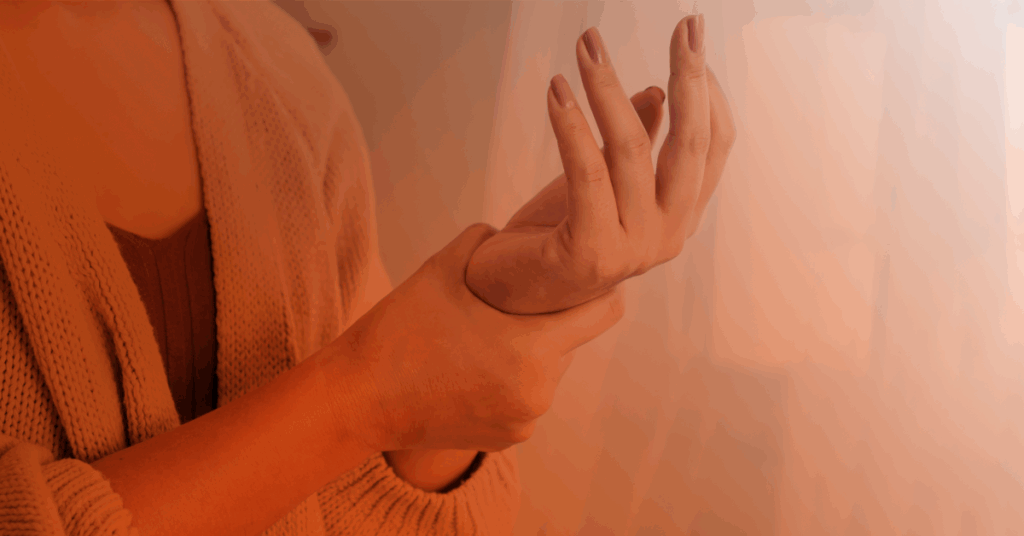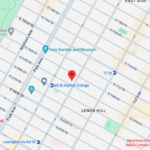Are you tired of living with chronic pain that hasn’t responded to medications, physical therapy, or even surgery?
If you’ve tried countless treatments without lasting relief, you’re not alone. Millions of Americans struggle with persistent pain that significantly impacts their quality of life, relationships, and ability to enjoy daily activities.
There’s new hope on the horizon. Peripheral Nerve Stimulation (PNS) represents a breakthrough in pain management. This minimally invasive treatment targets pain at its source without the risks and permanent implants associated with traditional spinal cord stimulators or major surgery.
At New York Bone & Joint Specialists, our pain management specialist, Dr. Efime Popovitz, is pioneering the use of advanced PNS technology to help patients reclaim their lives from chronic pain. This innovative treatment offers the potential for significant, lasting pain relief with minimal downtime and maximum safety.
Understanding Chronic Pain and Traditional Limitations
Chronic pain affects your entire life. When conservative treatments like medications, physical therapy, and injections fail to provide adequate relief, patients often face difficult choices: live with debilitating pain or undergo invasive procedures with significant risks and recovery time.
Traditional pain management challenges include:
Medications: Long-term use can lead to dependency, tolerance, and serious side effects
Injections: Provide temporary relief but require frequent repetition
Surgery: Involves significant risks, a lengthy recovery, and no guarantee of success
Spinal Cord Stimulators: Require permanent implants with infection risks and surgical complications
The PNS Advantage: Peripheral Nerve Stimulation offers a middle ground—effective pain relief without the drawbacks of permanent implants or major surgery.
What Is Peripheral Nerve Stimulation (PNS)?
Peripheral Nerve Stimulation is an advanced pain management technique that uses gentle electrical stimulation to interrupt pain signals before they reach your brain. Unlike spinal cord stimulators that require permanent surgical implants, PNS works directly at the source of your pain with a temporary, minimally invasive approach.
How PNS Differs from Other Treatments:
PNS differs from other forms of treatment in several ways.
Targeted Approach: Stimulates nerves near the actual source of pain rather than broadly affecting the spinal cord
Temporary Treatment: No permanent implant required—leads are removed after 60 days
Minimally Invasive: Simple office procedure with local anesthesia
Reversible: Completely removable with no lasting effects if unsuccessful
Precise: Customizable stimulation patterns for your specific pain condition
Conditions PNS Can Treat
Peripheral Nerve Stimulation has shown remarkable success in treating various chronic pain conditions:
- Occipital neuralgia
- Chronic headaches and migraines
- Neck pain from injury or arthritis
- Rotator cuff injuries
- Post-surgical pain
- Chronic shoulder arthritis
- Chronic lumbar pain
- Post-surgical back pain
- Nerve-related back conditions
- Chronic knee pain from arthritis
- Post-surgical knee pain
- Sports-related injuries
- Peripheral neuropathy
- Chronic ankle pain
- Post-surgical foot pain
The SPRINT PNS System: Advanced Technology for Superior Results
Our preferred treatment utilizes the SPRINT PNS System by SPR Therapeutics, representing the latest advancement in peripheral nerve stimulation technology. We choose this method because:
Proven Safety Record: Extensive clinical testing with minimal adverse effects
FDA Cleared: Approved for treating chronic pain conditions
No Permanent Implant: Completely removable after 60-day treatment period
Office-Based Procedure: No hospital stay or operating room required
Precise Targeting: Advanced lead placement for optimal pain relief
The SPRINT PNS System uses a thin, flexible lead (similar to a fine wire) that’s precisely placed near the nerves causing your pain. This lead connects to a small, external stimulator that delivers gentle electrical pulses. These pulses don’t cause pain—instead, they interrupt the pain signals traveling to your brain.
The Science Behind Success: During the 60-day treatment period, the electrical stimulation appears to “retrain” your nervous system, restoring normal, pain-free nerve signaling pathways. This neuroplasticity effect often provides lasting pain relief even after the device is removed.
What to Expect: Your PNS Treatment Journey
Before Your Procedure:
Comprehensive Evaluation: Dr. Popovitz will review your medical history, current treatments, and pain patterns to determine if PNS is right for you
Treatment Planning: We’ll identify the optimal nerve targets and discuss realistic expectations
Insurance Verification: Our team will work with your insurance to maximize coverage
The Procedure Day:
Simple Office Procedure: Performed in our comfortable office setting
Local Anesthesia: Only local numbing is needed—no sedation or general anesthesia required
Minimal Discomfort: Most patients report little to no pain during placement
Quick Process: The entire procedure typically takes 30-45 minutes
Same-Day Home: You’ll go home the same day with your stimulator activated
During Your 60-Day Treatment:
Immediate Results Possible: Some patients experience pain relief within minutes of activation
Customizable Control: You control when and how much stimulation you receive using a handheld device
Gradual Improvement: Pain relief may develop over days to weeks as your nervous system responds
Regular Monitoring: Weekly check-ins with our team and device representatives ensure optimal results
Normal Activities: After the first week, you can resume most normal activities
During stimulation, you may experience:
- Mild, pleasant tingling sensations
- Gentle vibrations in the treatment area
- Pressure sensations where you normally feel pain
- Most importantly: Significant reduction in your chronic pain
Is PNS Right for You?
PNS may be an excellent option if you:
Have tried conservative treatments like medications, physical therapy, and injections without adequate relief
Experience chronic pain that significantly impacts your daily life and activities
Want to avoid permanent implants or major surgical procedures
Have localized pain that can be targeted with nerve stimulation
Are committed to the 60-day treatment protocol and follow-up care
PNS may not be suitable if you have:
- Active infections at the treatment site
- Implanted cardiac devices (pacemaker, ICD)
- Other neuro-stimulation devices that could interfere
- Uncontrolled psychiatric conditions
- Need for immediate MRI imaging
Important: Dr. Popovitz will conduct a thorough evaluation to determine your candidacy and discuss any potential contraindications.
Safety and Side Effects: What You Need to Know
The SPRINT PNS System has an excellent safety profile with minimal risks. Some common side effects can include:
Skin Irritation: Minor irritation around the dressing site, easily managed with different adhesive types
Temporary Discomfort: Brief tenderness at the lead placement site
Activity Restrictions: Limited activities during the first week only
In rare cases, you may experience:
Infection: Very uncommon due to minimally invasive placement
Lead-Related Pain: Infrequent and typically resolves quickly
Device Malfunction: Rare with modern technology and expert placement
However, overall, PNS is the safer option compared to some other leading treatments.
- No permanent surgical implant reduces long-term complication risks
- Reversible treatment can be discontinued at any time
- Office-based procedure eliminates surgical and anesthesia risks
- Minimal tissue disruption compared to traditional surgeries
Expected Results and Success Rates
Clinical studies demonstrate that many patients experience:
- Significant pain reduction of 50% or more
- Improved function and quality of life
- Lasting relief that continues beyond the 60-day treatment period
- High patient satisfaction with the treatment experience
Timeline for Results:
Immediate (Day 1): Some patients notice pain relief within minutes
Short-term (1-2 weeks): Progressive improvement as settings are optimized
Medium-term (1 month): Full evaluation of treatment effectiveness
Long-term (Beyond 60 days): Sustained pain relief from nervous system changes
While PNS offers excellent results for many patients, individual responses vary. Dr. Popovitz will discuss realistic expectations based on your specific condition and pain patterns. If significant improvement isn’t achieved within 30 days, the device can be removed early with no lasting effects.
Ready to Explore Your Options?
Schedule your consultation today to learn if Peripheral Nerve Stimulation could be the breakthrough you’ve been seeking. During your evaluation, we’ll:
- Review your pain history and previous treatments
- Conduct a thorough physical examination
- Explain how PNS could help your specific condition
- Answer all your questions about the procedure
- Develop a personalized treatment plan
Don’t wait another day to address your chronic pain. Contact New York Bone & Joint Specialists now to schedule your PNS consultation today.
Frequently Asked Questions
How long does the PNS procedure take? The SPRINT PNS placement procedure typically takes 30-45 minutes and is performed in our office under local anesthesia. You’ll go home the same day with your device activated.
Will I feel the electrical stimulation? You may feel mild, pleasant sensations like tingling or gentle vibrations during stimulation. These sensations are not painful and many patients find them soothing. You have complete control over when stimulation is active.
Can I shower or bathe with the PNS device? You can shower carefully while avoiding direct water contact with the device area. Swimming and soaking should be avoided during the 60-day treatment period to prevent complications.
What happens if PNS doesn’t work for me? If you don’t experience meaningful pain improvement within about 30 days, the device can be easily removed in our office. There are no lasting effects, and you can explore other treatment options.
How soon can I return to work and normal activities? Most patients can return to desk work within a few days. Physical activities are gradually resumed after the first week, with full activity typically possible after 7-10 days.
Is the device removal painful? Device removal is a simple office procedure that’s typically less uncomfortable than the initial placement. Most patients report minimal discomfort during removal.





